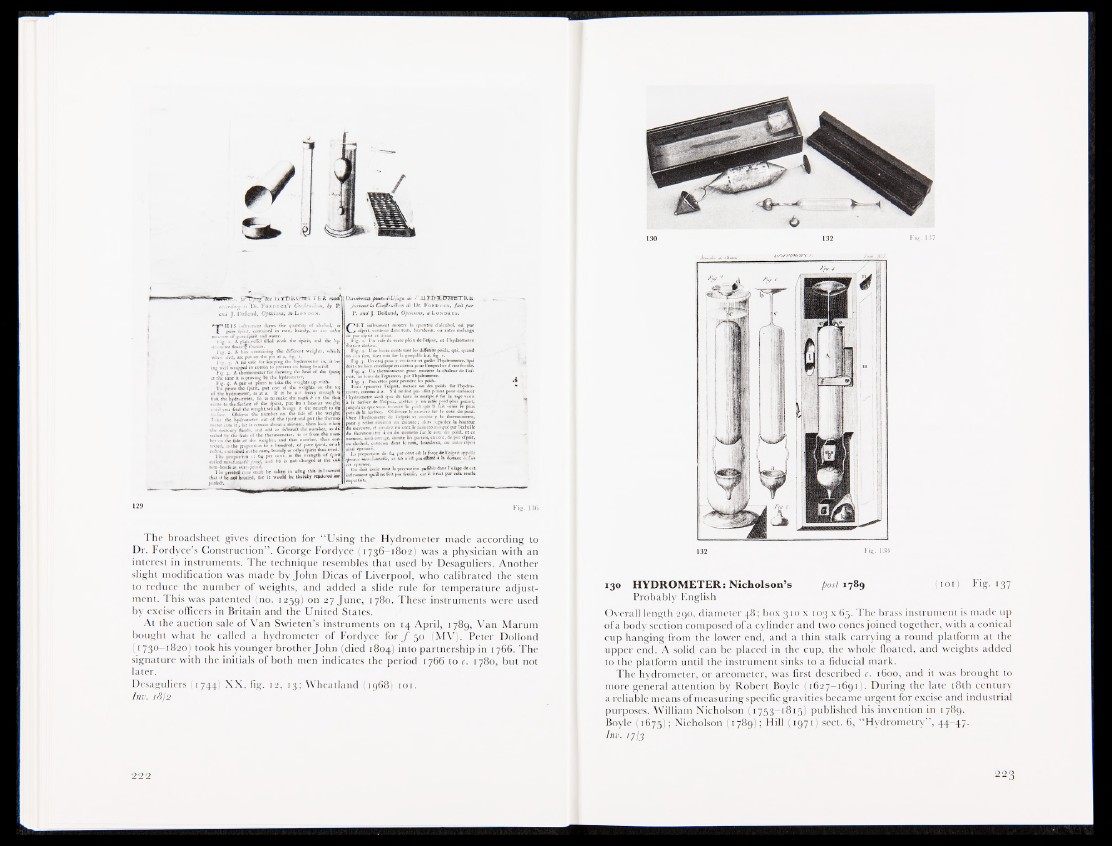
129 Fig. 136
The broadsheet gives direction for “ Using the Hydrometer made according to
Dr. Fordyce’s Construction” . George Fordyce (1736-1802) was a physician with an
interest in instruments. The technique resembles that used by Desaguliers. Another
slight modification was made by John Dicas of Liverpool, who calibrated the stem
to reduce the number of weights, and added a slide rule for temperature adjustment.
This was patented (no. 1259) on 27 June, 1780. These instruments were used
by excise officers in Britain and the United States.
At the auction sale of Van Swieten’s instruments on 14 April, 1789, Van Marum
bought what he called a hydrometer of Fordyce for ƒ 50 (MV). Peter Dollond
(1730-1820) took his younger brotherjohn (died 1804) into partnership in 1766. The
signature with the initials of both men indicates the period 1766 to c. 1780, but not
later.
Desaguliers (1744) XX, fig. 1.2, 13; Wheatland (1968) 101.
Inv. 18/2
130 HYDROMETER: Nicholson’s post 1789 (101) Fig- r37
Probably English
Overall length 290, diameter 48; box 310 x 103 x 65. The brass instrument is made up
ofa body section composed of a cylinder and two cones joined together, with a conical
cup hanging from the lower end, and a thin stalk carrying a round platform at the
upper end. A solid can be placed in the cup, the whole floated, and weights added
to the platform until the instrument sinks to a fiducial mark.
The hydrometer, or areometer, was first described c. 1600, and it was brought to
more general attention by Robert Boyle (1627—1691). During the late 18th century
a reliable means of measuring specific gravities became urgent for excise and industrial
purposes. William Nicholson (1753-1815) published his invention in 1789.
Boyle (1675); Nicholson (1789); Hill (1971) sect. 6, “ Hydrometry” , 44-47.
inv. n